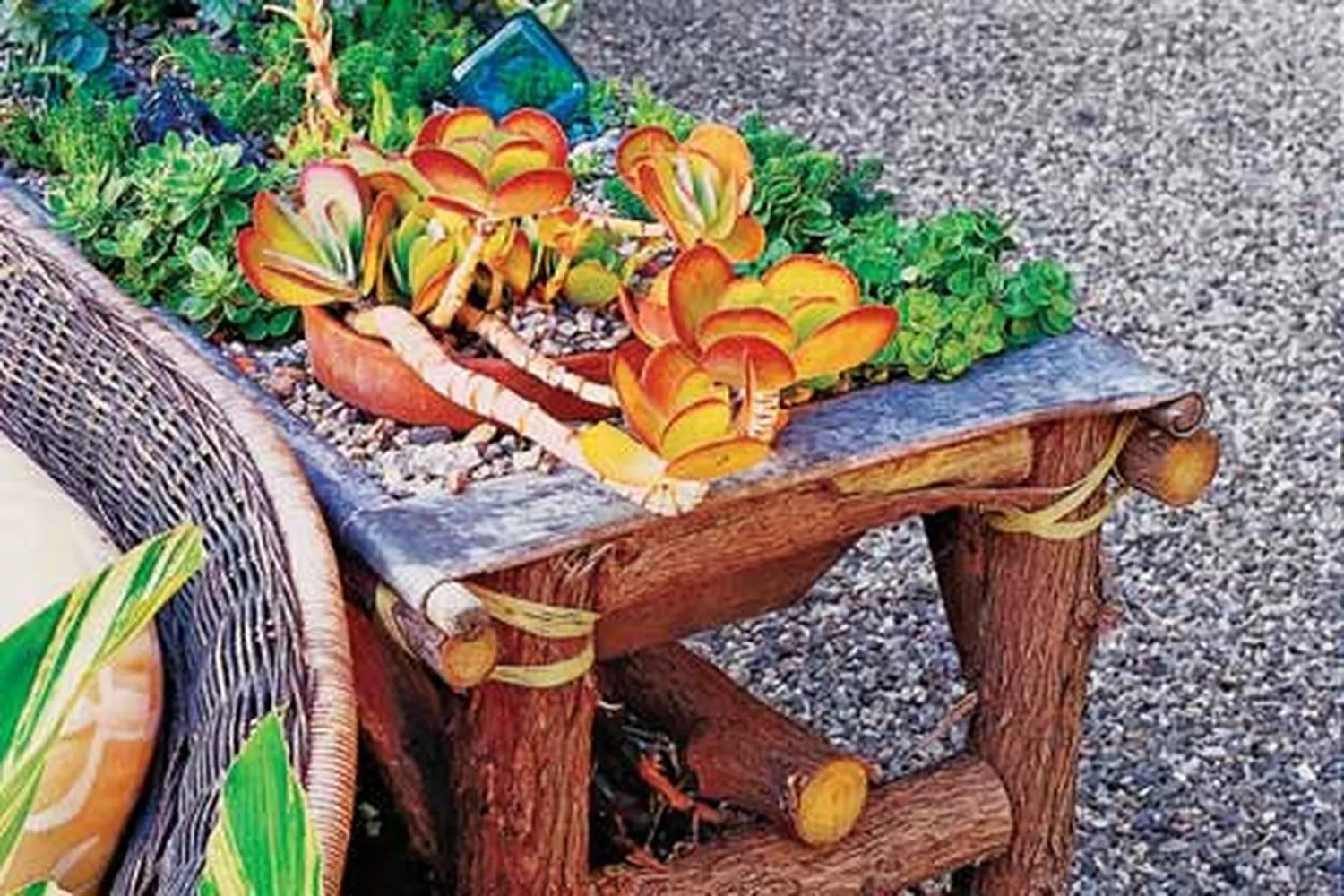Container gardening is about selecting the right plants, in the right pots, and deciding on the best location for them in your outdoor space. Pot placement is everything when it comes to transforming your yard into a more unique and personalized space. This guide explores the techniques for positioning pots to define spaces and create focal points in your garden.
Choosing the Best Location for a pot
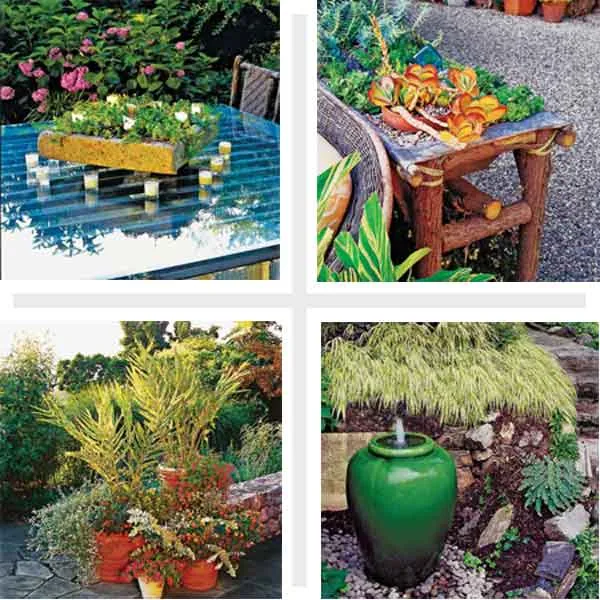
The placement of containers is important for the overall layout of your yard. Robert Welsch, owner of Westover Landscape Design in Tarrytown, New York, suggests thinking of pots as visual punctuation. “You can place one at the end of a path to lead your eye through the garden or to signal a change in direction on a walkway,” he explains.
When deciding where to place your pots, follow these tips:
- Account for the full-grown size of plants when arranging multiple containers.
- Position containers near a water source or irrigation system for easy maintenance.
- Place plants that need moisture in shadier spots and drought-tolerant ones in the sun.
- Use time-release pellet fertilizers or diluted fish emulsion to supplement nutrients.
- Group pots with similar water needs together for easier care.
1. Use Pots to Build a Stage for Plants
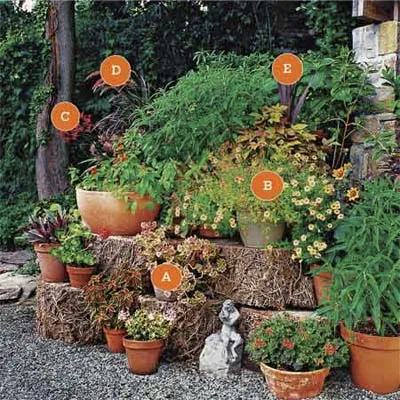
One option when placing pots within your garden is to create a tiered display. This involves using risers or platforms of different heights to showcase your potted plants. Here’s how to build this display:
- Choose a consistent pot material, such as terra-cotta, so the arrangement matches.
- Select plants with complementary colors and textures.
- Place taller plants in the back and shorter ones in front to create depth.
- Use natural elements, like sliced tree trunks, to build risers.
- Incorporate plants with different growth habits, such as upright, trailing, and mounding forms.
In the example shown, zonal geraniums, million bells, kangaroo paws, purple fountain grass, and New Zealand flax create a nice display. The use of varying heights and shapes in pots will help to create depth and balance in your garden.
2. Use Pots to Mark The Edges of Stairs or Walls
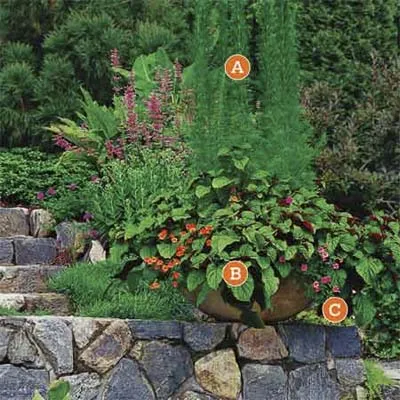
Strategically placed pots can serve functional purposes, especially when used to define edges or transitions in your garden. Large containers positioned at the top or bottom of stairs or along walls act as visual cues for route changes, provide a barrier on steps or ledges, soften hard architectural lines, and create a flow between different garden areas. When using pots as edge markers, follow these tips:
- Choose weather-resistant materials that can be used outside.
- Make sure the pots are stable and won’t tip over in windy conditions.
- Use a mix of plant heights and textures.
- Select plants that will stay healthy throughout multiple seasons.
For a modern look, try concrete or metal cube planters filled with bamboo or tall grasses. In formal settings, large metal urns with shrubs or small trees, such as Japanese maples, can be a statement piece. The use of vibrant, bold foliage also adds a pop of color to separate different garden spaces.
3. Create a Lasting Centerpiece with Pots
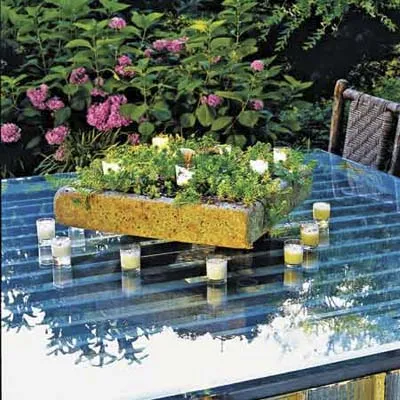
A well-designed garden can be a nice centerpiece for outdoor dining areas or seating spaces. These small landscapes offer year-round interest and can be easily changed throughout the seasons. Here are some ideas to create long-lasting centerpieces:
- Use shallow, wide containers to accommodate a variety of plants.
- Choose low-growing succulents or sedums for a drought-tolerant option.
- Incorporate plants and herbs with different textures, colors, and scents.
- Add decorative elements like small statues, rocks, or driftwood.
For a simple centerpiece, try planting low succulents in the saucer of a large ceramic pot. Make sure you have proper drainage by drilling holes or tipping out excess water after watering. You can also create a lush, green display by planting a metal tray with moss, Scotch moss, or thyme. Seasonal annuals can also be rotated throughout the year.
4. Turn a Container Into a Fountain Near the House
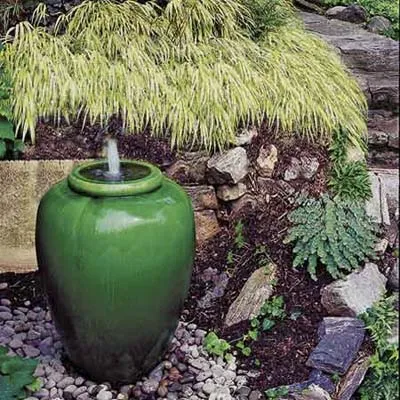
Adding a water feature to your garden can create a nice, calming space. A container fountain is an easy way to incorporate the sound of water into your outdoor space. When placing a fountain near your house, think about these factors:
- Make sure you have easy access to an electrical outlet for the pump.
- Choose a location where the sound of water can be heard from seating areas.
- Select a container that complements your home’s style.
For a more casual look, fill a zinc or galvanized metal tub with aquatic plants and a small bubble-jet pump. This creates a charming water feature that’s perfect for patios or small gardens. The soft sound of bubbling water can provide a relaxing space right in your backyard.
5. Create a console table–type planter for potted plants
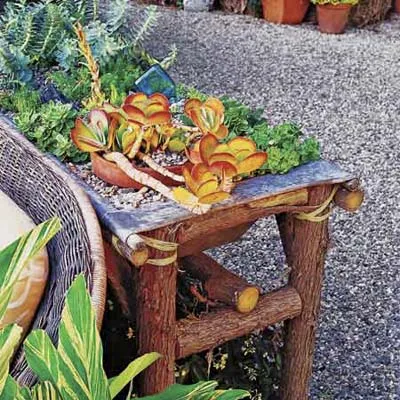
Elevate your potted garden by creating a unique planter that doubles as a table. This approach combines the beauty of plants with the practicality of a side table, perfect for outdoor living spaces. Here’s how to do this:
- Repurpose an old sink or metal container as the planter base.
- Support the planter with durable legs, such as cedar posts.
- Fill the container with soil for your chosen plants.
- Select a variety of plants with different heights and textures.
- Add decorative elements like colored glass or rocks.
This type of planter is best for showcasing specific plants, such as succulents, ferns, or orchids. The raised height allows for easy viewing, and you can double this surface as a space for placing outdoor dining items.
6. Use Pots to Create a Stopping Point
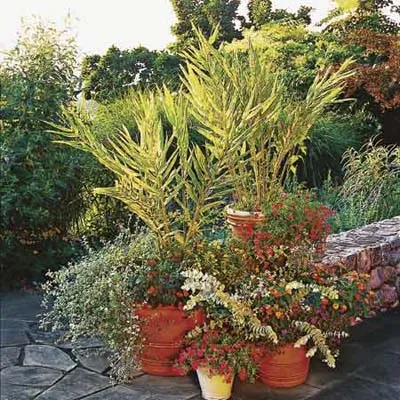
Strategically placed containers can guide visitors through your garden. By using pots to guide turns in a path or highlight specific areas, you can create a functional and easy-to-follow garden. Follow these tips:
- Use tall plants or large containers to create visual barriers.
- Group pots of varying heights for a dynamic display.
- Choose a cohesive color scheme for both plants and containers.
- Incorporate plants with movement, such as ornamental grasses.
While variety is important, maintaining consistency in pot shapes or materials creates a harmonious look. For a subtle design, use a single large decorative pot filled with a cascading plant like ivy or a licorice plant. This technique can guide visitors through different areas of your garden.
7. Use a Big-Leaved Potted Plant as a Screen

Large-leaved plants in containers can be natural screens, creating privacy. This technique is useful for providing the illusion of a larger space and better privacy, defining separate areas within a garden, and adding vertical height to flat landscapes.
Ornamental gingers, cannas, and large-leaved tropical plants are great choices for creating screens. For year-round screening in cold climates, consider evergreen shrubs or small trees that can be overwintered indoors or in a protected area. When selecting plants for a privacy screen, pay attention to growth rate and fully grown size, your general climate zone, maintenance requirements, and seasonal changes.
Build a Planter on Legs

Creating a custom planter on legs is a great way to add elevated greenery to your outdoor space. This project combines DIY craftsmanship with potted gardening, resulting in a functional addition to your patio or deck. Here’s a basic guide to building your planter:
- Choose a container, either a metal sink, a lipped zinc planter, or a custom-built wooden box.
- Select sturdy legs like cedar posts or metal pipes for support.
- Attach the legs securely to the container using the appropriate hardware.
- Add drainage holes if necessary.
- Fill the container with a lightweight potting mix for your chosen plants.
- Plant and decorate as wanted.
Remember to account for the weight of the filled planter when choosing materials and building methods. Consult DIY guides or get advice from your local hardware store. Elevated designs help you create a centerpiece for your garden or outdoor living space.
For more DIY planter ideas, see How to Make a Garden Trough and How to Build an Embossed Metal Planter.
